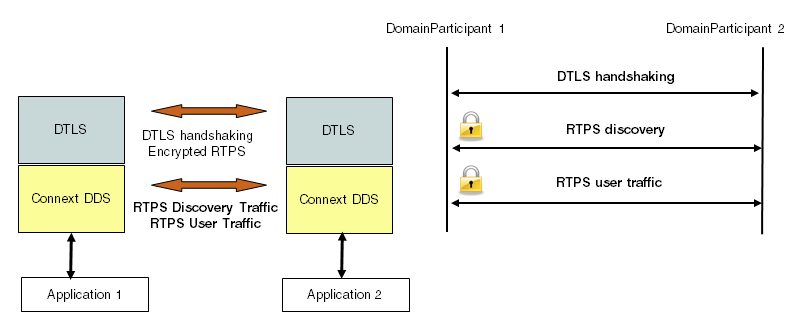Datagram Transport-Layer Security (DTLS)
Data security is provided by wrapping all Connext DDS network traffic with the Datagram Transport Layer Security (DTLS) protocol (IETF RFC 4347). DTLS is a relatively recent variant of the mature SSL/TLS family of protocols which adds the capability to secure communication over a connectionless network-layer transport such as UDP. UDP is the preferred network layer transport for the DDS wire protocol RTPS, as well as for NAT traversal. Like SSL/TLS, the DTLS protocol provides capabilities for certificate-based authentication, data encryption, and message integrity. The protocol specifies a number of standard cryptographic algorithms that must be available; the base set is listed in the TLS 1.1 specification (IETF RFC 4346).
Secure protocol support is provided by the open source OpenSSL library, which has supported the DTLS protocol since the release of OpenSSL 0.9.8. Note however that many critical issues in DTLS were resolved by the OpenSSL 0.9.8f release. For more detailed information about available ciphers, certificate support, etc. please refer to the OpenSSL documentation. The DTLS protocol securely authenticates with each individual peer; as such, multicast communication is not supported by the Secure Transport. There is also a FIPS security-certified version of OpenSSL (OpenSSL-FIPS 1.1.1), but this does not yet support DTLS.
The Secure Transport protocol stack is similar to the Secure WAN transport stack, but without the STUN layer and server. See DTLS Architecture.

© 2015 RTI